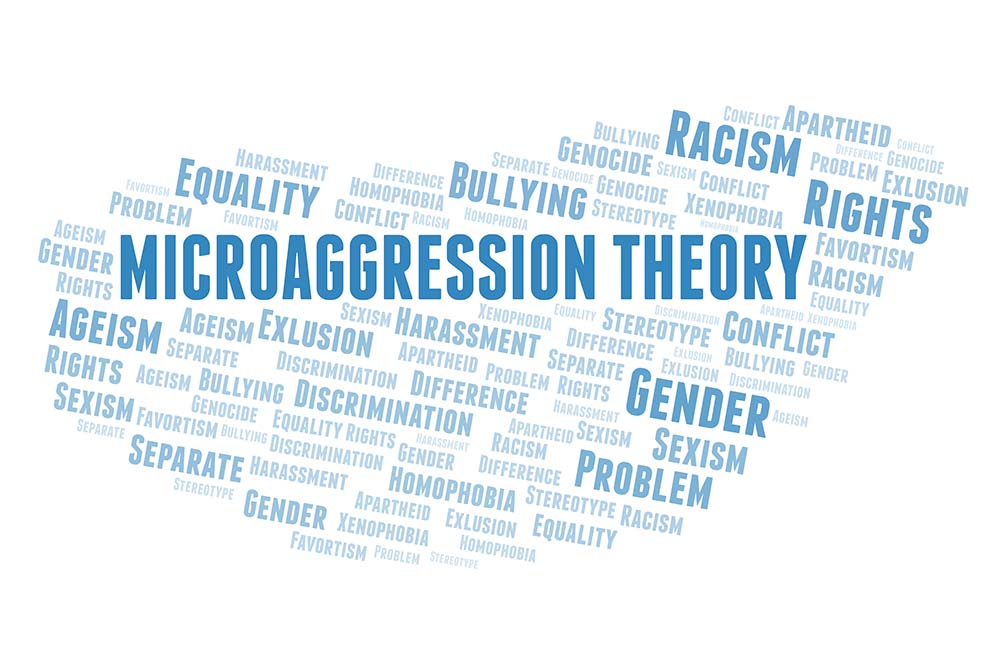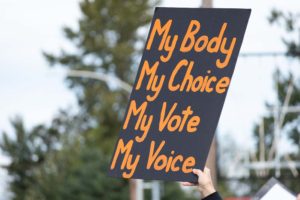One of the most important concepts in understanding Critical Race Theory is known as “microaggression.”
Microaggressions are best described as commonplace, daily comments or actions that “subtly and often unconsciously or unintentionally express a prejudiced attitude toward a member of a marginalized group.” (Merriam-Webster)
To better understand the subtleties that may change our interpretation of a given event as a microaggression, consider the following scenarios.
- A 4th-grader raises her hand repeatedly, and the teacher recognizes her or not.
- A shopper uses a $5 bill to pay for a purchase. The cashier either smiles or makes small talk. She deposits the change into the hand of the shopper or not.
- A woman goes to a car dealership to buy a new car. The salespeople stand around talking to each other or all converge to help her.
- A jogger briefly acknowledges a passerby. The passerby returns the greeting or walks by silently.
Now, if you are white — either the child in class, the shoppers, or the jogger — and the responses described are all by white people and are all negative, are you annoyed?
Are these negative experiences related to your race? Or might you suppose they are just having a bad day?
How do you feel if all of the actors, the teacher, the cashier, the salespeople, and the passerby are African American?
Are you thrown off guard, angry, or annoyed?
Now, consider the scenarios where the student, customers, and jogger are African American. The teacher, the cashier, salespeople, and the passerby are all white.
What immediately comes to your mind? Are you being treated this way because you are black rather than white? How do you feel? Angry? Downcast? Do you let this “roll off your back?”
Suppose the actors, the teacher, the cashier, and the passerby are all black?
What do you think?
What if the actor is a person of color from another group?
The events above may have occurred because the teacher, the cashier, and the passerby are just rude or indifferent. Or perhaps the teacher is tired, the cashier has to leave quickly, and the passerby has been caught up in a daydream.
But for people of color and members of other marginalized groups, these types of slights — whether intentional or unintentional — are commonplace, disheartening, and very damaging.
When race plays a role in one’s conduct, social scientists refer to this as a “microaggression.”
Note: for the purposes of continuing our discussion of critical race theory, we are focusing on the concept of microaggression as it relates to racism, but any marginalized group can experience microaggressions.
Microaggression: One of the many “sudden, stunning, or dispiriting transactions that mar the days of women and folks of color. Like dripping on sandstone, they can be thought of as small acts of racism, consciously or unconsciously perpetrated, welling up from the assumptions about racial matters most of us absorb from the cultural heritage in which we come of age in the United States. These assumptions, in turn, continue to inform our public civic institutions — government, schools, churches — and our private, personal, and corporate lives.”*
Notice these are often unexpected, harsh, or stunning, emotionally dispiriting events that happen on an individual basis. Unless you witness them directly, especially as a person from the dominant or privileged group, you don’t know they occur.
In an employment discrimination case, courts have held that repeated microaggressions can warrant damages to a plaintiff who experiences this conduct.
For those of us who commit them, we may not realize we are even doing it because of the way we were raised. The culture in which we grew up can influence us in ways we have no awareness of, but people in the minority group understand clearly. This has been referred to as subjugated knowledge — knowing something as a function of being controlled, oppressed, subdued, or colonized, for example.
When the society, hence the government, schools, and churches formed by the dominant class, fails to understand these microaggressions, then these systems also perpetuate microaggressions that rise to a systematic (standardized or well-ordered) level. They become “macro” aggressions because of the common use and broad-scale or application.
“Macroaggressions” result from aggregated microaggressions that occur at the systemic and systematic levels of life
What if the woman at the car dealer finally gets approached by a salesperson, and she buys a car after they negotiate? However, a subsequent lawsuit reveals that she paid $1000 more than the average white male pays for that same car. This removes the argument that she was not a good negotiator. Her skills become irrelevant if the dealership is going to systematically discriminate against her because she is a woman — or is not a white male. (Ian Ayres, Fair Driving, 104 Har. L. Rev. 817 (1991).
What if the sales reps habitually tell women to come back with their husband or boyfriend to conclude the sale?
Why has the expression “driving while black” gained common understanding?
Does police violence perpetrated on people of color satisfy the definition of social macroaggression?
Does this violence have to rise to the level of a police-involved fatal shooting to rightly get designated as a macroaggression?
Do routine beatings or racial profiling involving specific populations constitute macroaggressions?
Next week we will explore another important CRT concept, “intersectionality” when someone experiences more than one type of discrimination — like gender and race — at the same time.
Blessings on your journey to understand the complex workings of American “isms.”

*The scenarios above, including the provided definition of “microaggression,” can be found in Critical Race Theory: An Introduction, Richard Delgado and Jean Stefancic, 3rd., NYU Press, 2017, pp. 1-3.





